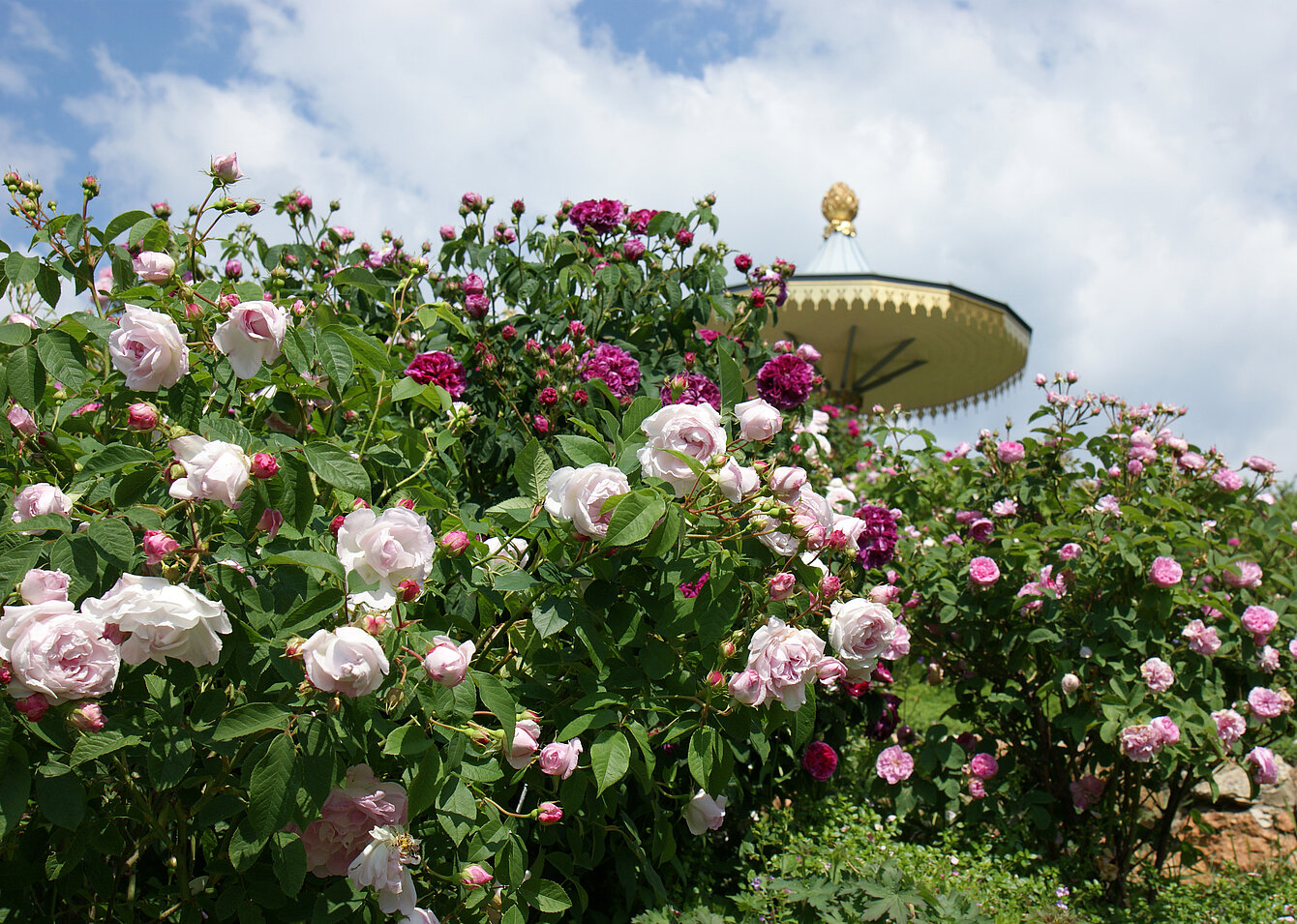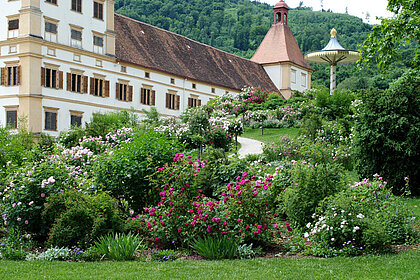When Jerôme, Count Herberstein began, after 1820, to transform the formal Baroque gardens into an English landscape park, he was following a very widespread fashion. Landscape gardening had become fashionable in Great Britain around a hundred years earlier as a stylish pastime for erudite gentlemen. It was seen as a lyrical concept, deeply rooted in Classical mythology and literature, not nature as such, but poetry become form.
Herberstein, in his turn, set about realising “a new world” at Eggenberg, “...a consummate landscape painting, recreating the diversity of Nature.” His vision would become reality in the skilful hands of his head gardener, Franz Matern. Despite difficult prevailing conditions, Matern succeeded within only a few years in transforming the side of the park nearest to the Palace into an English landscape garden. It was after 1833, however, that his masterpiece would be created: a vista point that functioned simultaneously as a rose garden.























